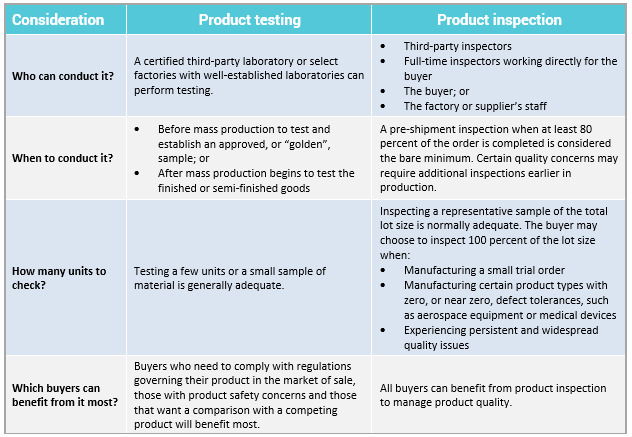The True Wireless Stereo (TWS) headphone market is booming. Every month we’re seeing a new product launch, and the technology is one of the most rapidly evolving in the field of consumer acoustics. But what is driving all this action? Are TWS Earbuds really that much better than traditional, wired devices? And what are some of the best TWS devices on the market today?
What is True Wireless Stereo (TWS) Technology?
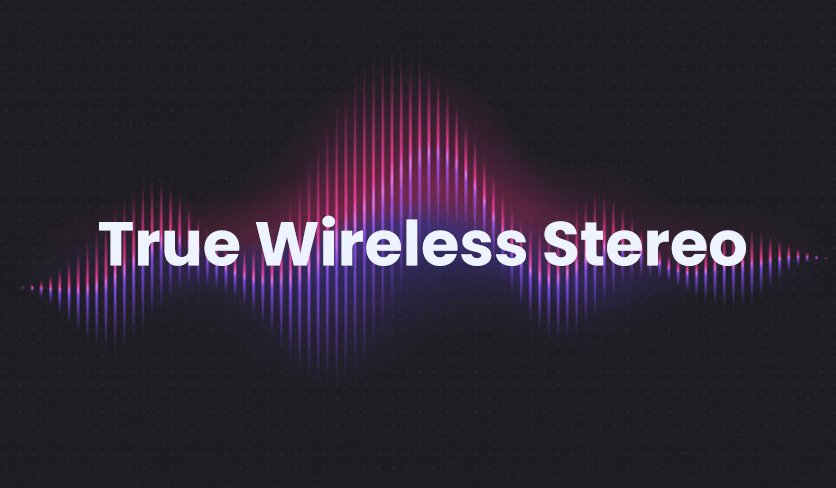
True Wireless Stereo technology is all about enjoying real stereo sound without the hassle that comes with cables. Stereo sound means that the left and right headphones each receive their own channel, which allows for a crisp, immersive listening experience compared to mono (single channel) sound. Pseudo-wireless headphones, with a short cable between the left and right headphones, have been around for a while. It’s only more recently that truly wireless headphones have hit the scene.
Specs to Look out for
Not all TWS devices are created equal. There can be critical differences in specifications that lead to very different listening experiences. If you’re in the market for TWS Earbuds, you should look out for the following…
Bluetooth tech
Bluetooth is a technology that allows devices to communicate wirelessly. All modern wireless headphones depend upon Bluetooth to be able to receive music from a phone or other device. Bluetooth has undergone many iterations over the years. The latest version, Bluetooth 5.2, offers some notable changes that are great if you’re considering TWS Earbuds.

Bluetooth Low-Energy, also known as BLE, was part of the Bluetooth 4 upgrade. It does exactly what it says on the tin, namely allowing devices to talk to each other over the Bluetooth protocol whilst consuming significantly less energy than before. The advent of Bluetooth 5 came with Bluetooth Dual Audio. With this feature, you can connect two different audio devices, such as a car sound system and your Bluetooth headphones, to your phone simultaneously.
Chipset
The chipset is another name for the Bluetooth transmitter/receiver inside your headphones. The chipset is what enables TWS Earbuds to communicate wirelessly with your phone.
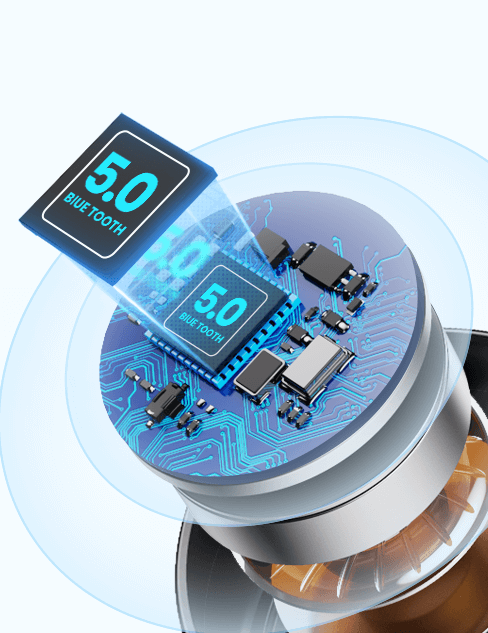
Major brands that provide system-on-chip (soC) solutions for wireless headphones are Qualcomm, Realtek, AppoTech, Actions, BES, and Cypress.
More recently, Huawei and Apple have begun to use their own proprietary SoCs in their headphones. This move will allow the two companies a greater deal of control in deciding what features to include in their audio devices, as well as (hopefully) lowering the overall cost to the consumer.
Drivers
Headphones have plenty of different elements, but arguably the most important is the driver. The job of these tiny units is to convert electrical signals into sound and then drive it down through your ear canal. Without drivers, you’d be walking around with ear plugs rather than headphones.
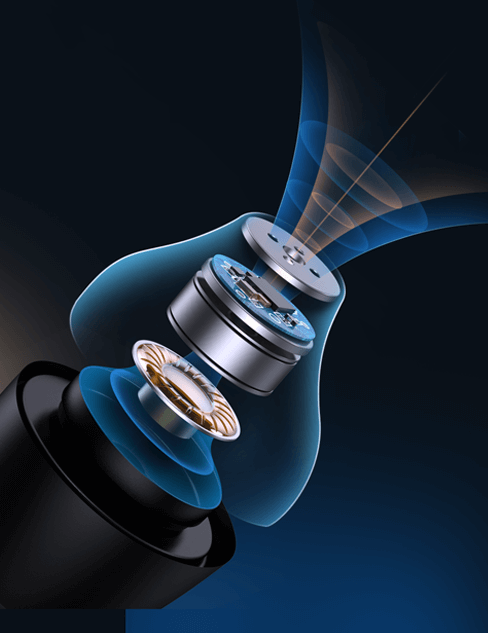
Drivers are generally made up of three components:
- A magnet, which creates a magnetic field
- Voice coils, which move the diaphragm and create sound when an electric current passes through them
- A diaphragm, which vibrates to create sound waves
Earphone drivers are usually 5mm – 15mm in diameter. But that’s mainly because headphones are built around the driver and in-ear models have to fit into a certain size bracket. But driver size is important to a degree. Larger diaphragms are capable of pushing and pulling more air compared to smaller ones. That means a greater variation in sound pressure, stronger sound waves, and louder volume – especially when you’re in the mood for heavy bass.
There are four different driver types you need to consider when choosing a pair of headphones, Dynamic Drivers, Planar Magnetic Drivers, Balanced Armature Drivers, and Electrostatic Drivers.
- Dynamic Drivers
First up are dynamic drivers. These usually feature a larger diaphragm and provide a more bassy punch as a result. These are the most common found in headphones, in part because they are affordable for manufacturers and do a decent job without using up too much power.
- Planar Magnetic Drivers
Planar Magnetic Drivers are usually found in high-end earphones and headphones. The diaphragm is sandwiched between magnets. The result is a clean sound with little distortion.
All that accuracy comes at a price though: Planar Magnetic Drivers usually require external power.
- Balanced Armature Drivers
Balanced Armature Drivers are the smallest type of driver around and are most commonly found in in-ear headphones. Manufacturers tend to have several in a single earpiece, which allows the earphones to reproduce a range of frequencies with minimal distortion.
- Electrostatic Drivers
Electrostatic Drivers rely on diaphragms that are electrostatically charged. As a result, there are no moving parts, negligible distortion, and overall exceptional sound quality. You’ll most commonly find these big, expensive headphones in professional studio environments or the homes of your audiophile friends!
Audio codecs and encoding methods
A codec is a piece of software that compresses data in order to transmit it, and then decodes the received data. The codec that your Bluetooth headphones use can have a major impact on the quality of the sound you hear on playback.
Despite their importance, Bluetooth codecs are one of the most often overlooked aspects of TWS Earbuds.
TWS Bluetooth Codecs
- SBC
SBC was the very first codec used in Bluetooth devices, but it now has a reputation as being one of the worst around. The main problem with SBC is the effect of compound compression. Audio transmitted via SBC will have already been compressed, for example as an MP3, and then compressed again when transmitted over the air, causing a significant decline in audio quality.
- AAC
AAC has become the standard for transmission of audio across Bluetooth and is used in all Apple products. The plus side is that any audio encoded using AAC, regardless of the file format (MP3, MP4 etc), doesn’t have to be compressed to send it over the air.
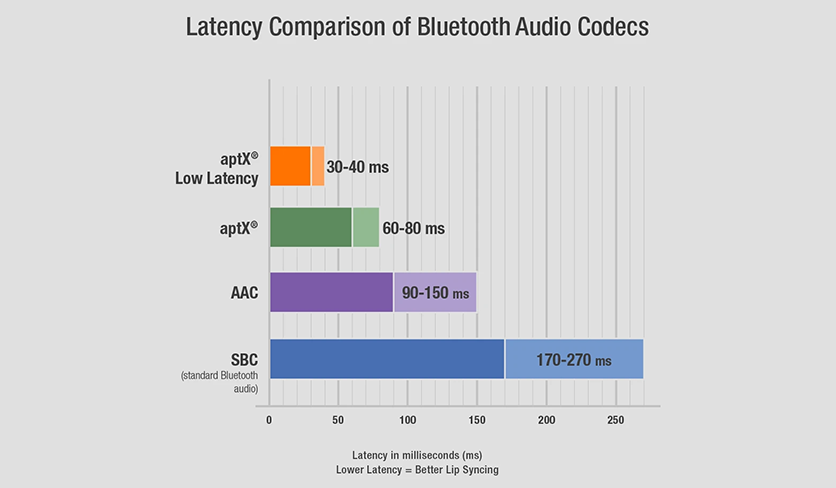
- aptX, aptX LL, aptX HD
A relative newcomer, aptX and its variants have been entirely designed and developed by the mobile chipset manufacturer Qualcomm. aptX has a bitrate of 352kbps for 16-bit audio with a sampling rate of 48khz, whereas aptX HD offers a whopping 576kbps for 24-bit audio! This increased bandwidth enables greater preservation of data and higher audio quality.
- LHDC & LDAC
Low-latency and high-definition audio codec (LHDC) and Sony’s LDAC are two high-end codecs that offer maximum bitrates of 900kbps and 990kbps respectively.
Currently, LDAC has not been widely adopted by TWS manufacturers. But many TWS buds support LHDC.
How do you use TWS Earbuds?
Now that you’ve got the technical information down, you might be wondering how to actually go about using TWS Earbuds. Well, guess what… We’ve got you covered there too!
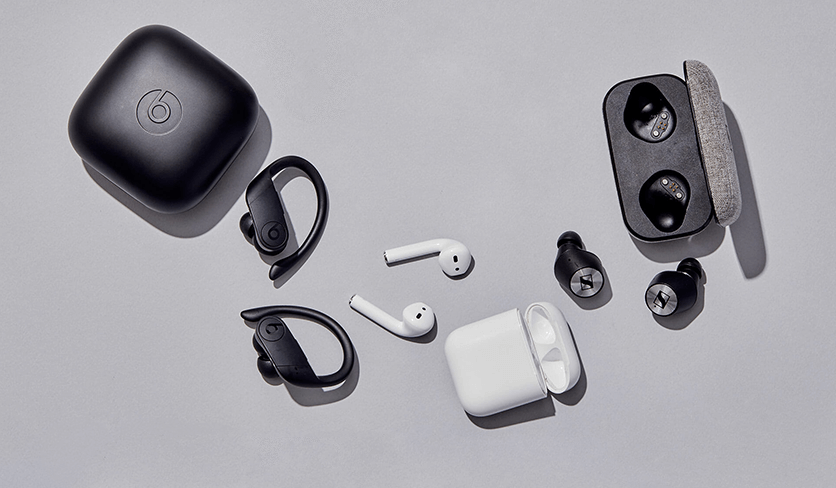
Battery
The majority of TWS Earbuds have very small integrated batteries. The result of this small size is that their average battery life is around 4-5 hours. To overcome this, most manufacturers now include a charging case with their products. A charging case neatly contains your headphones, and by want of a larger battery, charges them whilst they are sitting safely in your pocket. You will still need to recharge this case periodically, and the most common way of doing this is over USB.
The charging time for both the headphones and the charging case itself can vary a lot. Generally, it takes headphones around 1-2 hours to fully recharge inside their case, and the case normally takes less than an hour. If the charging case in question uses USB-C, this can be as low as 30 minutes.
Touch Control
Another feature common to pretty much every set of TWS Earbuds is touch control, though some lower-end models do still have mechanical switches. The exact input methods vary, but generally, the left and right headphones will both have touch controls assigned to various functions, e.g. left for volume down, right for volume up. Also, tapping, double-tapping, and a long press can all have different roles.

Touch control is all about convenience, but it can take some getting used to! Your best bet is to spend a little time familiarizing yourself with your specific device’s touch functions. You’ll be a pro in no time!
Voice Assistant
Many TWS Earbuds have been designed specifically for use with mobile phones, and therefore come with a microphone as part of their design. One particularly nifty result of this is that it can allow you to use your choice of voice assistant, for example, Siri, Alexa, or the Google Assistant – all without taking your phone out of your pocket. The command for this is normally as simple as a single tap to the touch-control.
When is TWS Tech Most Useful?
TWS technology is useful in any situation where you would rather not have to deal with the mess of tangled cables that come with using wired devices. Wires get in the way and it’s impossible to pretend they aren’t there, which isn’t ideal when you’re trying to escape with music or a podcast.

Our favourite times to use TWS earbuds are:
- While relaxing at home
- When cooking
- When taking a flight
- In the gym or when out exercising
- On the commute to work
- When taking conference calls
- Anytime we want to escape for a little while!
Last but not least, TWS Earbuds are great for everyday use around the house. Because they are a comfortable and cable-free alternative to regular headphones, you can wear them while working, doing chores, or relaxing in the evenings!
TWS headphone design and material considerations
Apart from the internal workings and electronics, there are many other factors to consider when choosing the right pair of TWS Earbuds. We haven’t even got to materials, shape, design, and earbud fit yet!
Material
The most popular material for the main housing of TWS Earbuds is plastic. However, some products use aluminum, or a mixture of the two. In theory, this can add a bit of strength and durability, but that comes at the cost of a little more weight. Plus, cold metal in your ear isn’t for everyone!
TWS Earbuds come in a variety of shapes and sizes, from the classic AirPods with their signature “dangly bits”, to ones with a smaller form factor that fit entirely inside the contours of your ear.
Not every device will fit every person, so you should definitely take your own preferences into account when making your purchase. Some headphones can seem comfortable at first, but after prolonged use causes sore or uncomfortable spots. Luckily, most manufacturers have pretty good return policies, so you can try them out and see how they feel.
Eartips come in two materials, silicone and foam, and a number of different shapes and sizes.
Silicone is the more common material, as it is cheaper and tends to last longer. Silicone is soft and flexible, and works fairly well for most people.
Earbud Shapes and Sizes
There are three standard sizes for earbud eartips: small, medium and large. Most manufacturers send all three alongside new earbuds, allowing you to find the perfect size to suit your ear. A snug fit gives you added comfort and sound insulation. The more complete the seal, the clearer your listening experience will be. This is because there’ll be less sound bleed and interference from external noises.
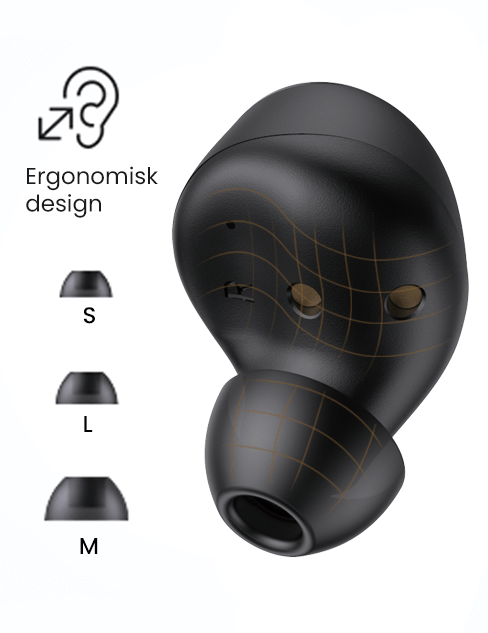
Increasingly, manufacturers are using memory foam instead of silicone for their earbud tips. Foam offers a better seal than silicone, as well as an increase in comfort. This is primarily because the shape of the ear canal isn’t fixed; rather, it changes as the jaw moves. Foam can change shape and adhere to these changing contours more readily than silicone because it is a more compressible material.
Memory foam earbuds are normally recommended only for audiophiles, musicians, or anyone for whom maximum sound isolation is important.
Article Source: UGREEN



